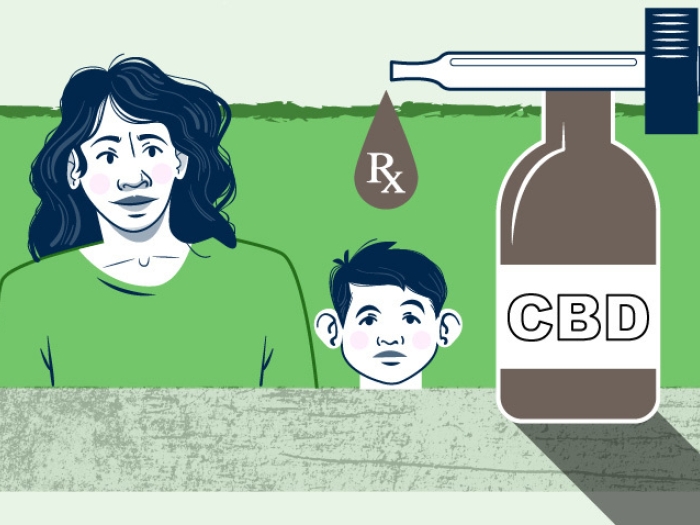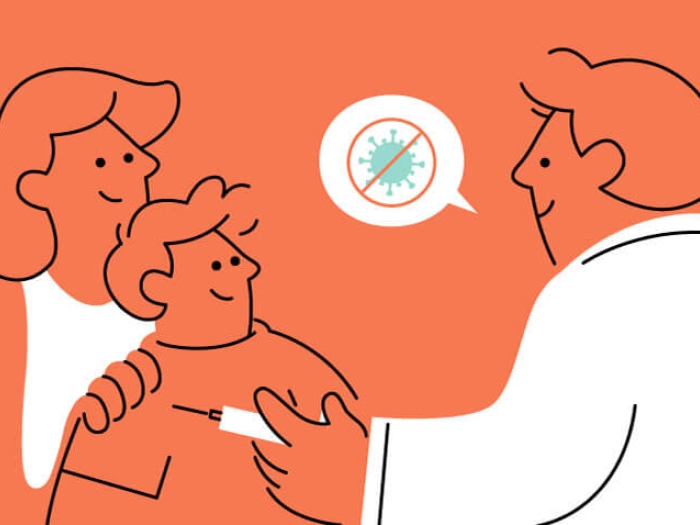Despite expert recommendations, many parents delay talking to their kids about inappropriate touching, national poll finds.
5:00 AM
Author |

Parents often tell children about ways to keep themselves safe: Look both ways when you cross the street. Wear seatbelts. Don't play with matches.
But some conversations are more difficult than others. Among them is talking about sexual abuse.
And many parents delay talking to their kids about inappropriate touching, according to the C.S. Mott Children's Hospital National Poll on Children's Health at Michigan Medicine.
Despite expert recommendations to talk about "body safety" during preschool years, less than half of parents of preschoolers say they've begun that discussion.
Meanwhile, one in four parents of elementary school age children say they haven't talked about inappropriate touching. The most common reasons include not getting around to it, the child is too young, not wanting to scare the child and not knowing how to bring it up.
But about one in four girls and one in 13 boys experience child sexual abuse at some point in childhood, according to the Centers for Disease Control and Prevention. This makes it critical that parents have the conversation, says Mott pediatrician Alison Dickson, M.D.
"It really depends on your child's development, but at every stage there are age appropriate ways to talk about body safety," Dickson says.
"Many parents aren't sure how to navigate the conversation or may feel uncomfortable themselves but there are approaches that don't have to be scary or too intense."
Dickson shares advice for how parents can equip kids with the tools they need to prevent, confront or respond to attempts of sexual abuse.
1. Teach children "you're the boss of your body"
Talk about body safety in simple ways kids can understand. This can start as early as age two.
"Say 'this is your body. Let's think of ways to keep your body healthy and keep your body safe,'" Dickson says. "Or simply label what you are doing in your daily routine. Say, 'we need to keep your body safe, so we buckle up in the car seat,' and use the same language when you talk about bike helmets, healthy foods, holding hands to cross the street and so on."
Then, empower them to speak up when a peer or sibling is doing something hurtful, like if a classmate pushes them on the playground. Teach them to say "stop, this is my body and I want to keep it safe" in a firm but polite way.
"You want to help them have ownership of their own bodies and feel comfortable setting boundaries," Dickson says.
2. Don't force any kind of touch
Parents are balancing encouraging social skills with encouraging ownership of one's body. This is challenging, but it is important that kids see that they are in control. One way is to not coerce affection or any physical contact with anyone – even hugging family members. "Kids will be uncomfortable at different times for different reasons," Dickson says.
"Don't force them to use their bodies in a way they don't want to. Give them options."
MORE FROM MICHIGAN: Sign up for our weekly newsletter
When your child is shy to greet someone, you model what is comfortable for you and then say, for example, "Aunt Jenny is here! You can give Aunt Jenny a hug or a high five" or "Mr. Library gave you a sticker. You can fist bump him or just wave."
3. Use the proper words for body parts
Not all parents use correct language for anatomy and sometimes use nicknames instead. But you should use the right names just as you would for elbows, feet or ears. Kids may sense parents' awkwardness around talking about certain body parts and think it's something to be ashamed of.
It really depends on your child's development, but at every stage there are age appropriate ways to talk about body safety.Alison Dickson, M.D.
"If you teach children the proper names and tell them these are the doctor words for these parts, it will strengthen their ability to communicate about these topics," Dickson says. "In turn, it will create more openness and less secrecy."
"You don't want to do anything that may make them feel embarrassed about asking questions. If you're uncomfortable talking about body parts, they will have discomfort as well."
4. Keep the right tone
Parents may avoid the topic because they think that their children are too young and the subject might be scary. But there are ways to bring it up in normal conversation. Maybe it's at bath time, on the way to a doctor check up or before swim lessons.
"If you revisit it frequently and briefly during those natural times, it doesn't feel so heavy," Dickson says. "It's also important not to laugh or scold. It's normal for kids to have questions that can feel silly in front of grown-ups or have curiosity that feels excessive to adults. Try to limit your own reactions to being supportive and matter of fact."
Using children's books or other resources to help guide conversations might be helpful too. Some titles Dickson uses include "My Body! What I Say Goes!" by Jayneen Sanders and "I Said No!" by Kimberly King and Zack King.
Like Podcasts? Add the Michigan Medicine News Break to your Alexa-enabled device or subscribe for daily updates on iTunes, Google Play and Stitcher.
"When you have kids who are looking for more information but you're stuck on how to talk about something, books can be a wonderful form of support for both parents and children," Dickson says.
Parents should also reach out to their child's doctor or school for help with approaches and answers.
5. Talk about good touch versus bad touch
You can tell your kids about different kinds of touches, Dickson says. Safe (good) touches feel caring, like pats on the back or wanted hugs. Unsafe (or bad) touches hurt your body or feelings, such as pinching or hitting. Children should know it's ok to say no even if it's a family member or friend.
"Children need to understand good touches and bad touches but this extends beyond just the body," Dickson says.

"I usually say good touches or OK touches feel like they are helping, like a hug from mom when you fall down. Bad touches are ones that make you feel scared or yucky and you want them to stop."
6. Use simple rules and scripts
Some experts recommend using the swimsuit rule to help kids understand what parts of their body are private – as in if it's covered by a swimsuit, it's a private part. And it's important to teach them that no one should look at or touch anyone else's private parts, Dickson says.
But that's just one piece of the conversation. Potential abusers may start with other seemingly innocent touches, like stroking an arm or back or playing with hair, for example.
"It's really helpful to give kids clear rules and the swimsuit rule is very concrete and very accessible for kids. But it's just one item on the list and part of a much larger conversation," Dickson says.
Help children understand that it's important to share these rule breaches. Practice a script with them that includes saying no, getting away and telling a trusted grown up. For example: "If your silly friend thinks it's funny to show you his bottom, say, 'No! Stop. Private Parts are private.' Walk away from him and tell your teacher and your mom." Your practice script doesn't need to be scary, it can be familiar or basic and still teach your child an important skill.
7. Keep having the conversation
Parents should have shifting, developmentally appropriate conversations about body safety with their kids as they get older, Dickson advises. Questions change as children are exposed to media and peers and begin to understand more about bodies and sexuality.
"Some kids are happy to understand these issues at the basic preschool level for a long time. Some kids will suddenly make a big jump and want a lot more information," Dickson says. "It's good to review these topics frequently and, in those moments, welcome questions and use them as guides for how much information to provide."

Explore a variety of health care news & stories by visiting the Health Lab home page for more articles.

Department of Communication at Michigan Medicine
Want top health & research news weekly? Sign up for Health Lab’s newsletters today!





